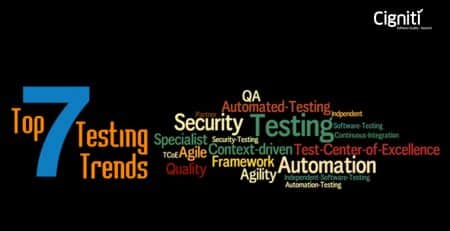Predictive Maintenance with IoT & Why Testing will be Critical
One of the most important use cases for the Internet of Things is predictive maintenance. Companies today, in the face of rigid time constraints and stiff competition, have no choice but to diagnose any glitches and failures and prevent them from damaging crucial infrastructure applications. Not only is the failure of advanced, complex machinery expensive, it can also ruin the all-important production timelines and thereby prove disastrous for any organization.
What usually happens in a company’s maintenance regimen is this: a team of technicians comes to carry out their routine tests and inspections at particular intervals, which is the normal way of going about preventive maintenance, but the obvious problem is that there’s no guarantee of smooth operation between the scheduled inspection periods. Furthermore, this relatively outdated approach is far costlier and more labor-intensive than it needs to be.
The need for predictive maintenance with IoT makes itself apparent in such cases. In any critical infrastructure, nothing is more important for the stable functioning of the overall system than constant uptime and the immediate identification, diagnosis, and repair without obstructing the flow of operations. So, what manufacturers have started doing is installing various sensors in their equipment – in effect, when a particular component or a whole device is malfunctioning or overloaded, it can be attended to immediately and have its specific issue dealt with right at the appropriate time. This approach, in contrast to the traditional scheduling of maintenance, is far more sensible, efficient, and inexpensive.
Going forward, as the world gets more integrated with the Internet of Things, predictive maintenance will eventually end up as the standard way of managing and mitigating errors and failures. The twin benefits are of course performance optimization and significant reductions in maintenance and inspection costs.
The benefits of predictive maintenance become even more evident in the fields of energy, building systems, and transportation.
Energy: Relevant operators can control and manage wind turbines and generators from a central base and take corrective measures for overheating and overloaded components.
Buildings: Instead of ineffective monitoring and inspection schedules, maintenance teams can take advantage of inbuilt sensors to assess lighting, plumbing, climate control, surveillance etc, and thereby efficiently catch and eliminate any potential issues with system performance.
Transportation: Commuters and operating teams will both be spared the time losses associated with regularly scheduled maintenance runs for trains, planes, and buses. Instead, the networked vehicles will alert the central information centers with status messages pertaining to any heating and electrical problems in any vehicle.
The Importance of Testing
The integration of testing with maintenance operations and system workflows is absolutely crucial to an organization’s success. Let’s take a look at some of the principal issues:
- Automation: In an environment of interoperable components and devices, across a range of very different scenarios, automation is vital to ensuring efficiency and smooth functioning. Manual methods in predictive maintenance will end up far more time-consuming, tedious, and resource-intensive, and therefore detrimental to any business.
- Usability: The integrated IoT apps are required to be compatible with a variety of operating systems and devices. Testing for compatibility with a large number of device and OS combinations is not an effective use of one’s time, so testing teams need to analyze real-world usage data to identify the relevant devices and test them for cohesion and overall performance.
- Performance: A crucial element that needs to be tested constantly, in real-time. This includes both the stability of the network and the second-by-second operation of all the machines that make up the infrastructure.
- Security: Data encryption needs to be assessed for glitches and loopholes to keep hackers at bay, and thereby keep business-critical information away from predators.





Leave a Reply